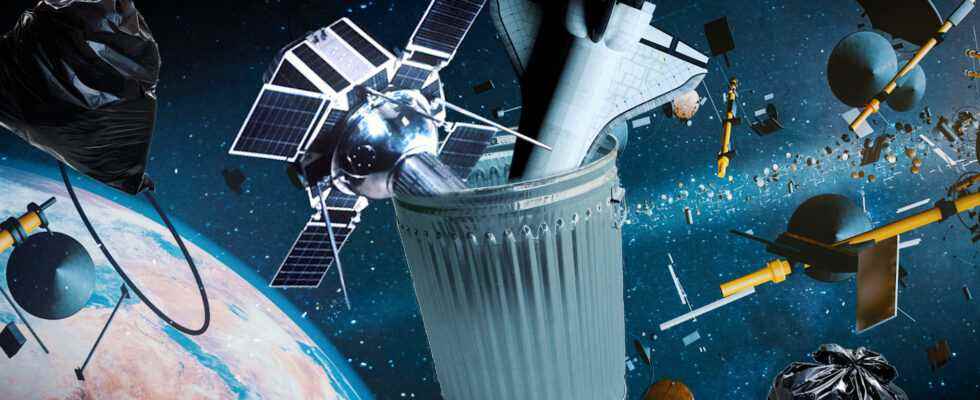Space debris swirls in earth orbit. This pollution represents a collision hazard for astronauts, space stations and satellites. An area between 750 and 1,100 km altitude is impassable.
Space debris is dangerous to the International Space Station (ISS). On June 16, 2022, a trajectory correction had to be carried out, in order to avoid a risk of collision with an artificial object. It was one of the remnants of a Russian anti-satellite missile test, which had taken place 7 months earlier, on November 15, 2021.
Fortunately, the station crew was not endangered during the avoidance maneuver and during the passage of the debris. Nonetheless, the incident underscores how debris created by this Russian missile is a lasting threat. More generally, all the space debris that swirls in Earth orbit is a threat to astronauts, the ISS or the Chinese space station. This debris is also notorious pollution, which complicates the balance between objects in orbit.
The equivalent of the Eiffel Tower, in small pieces, rotates in orbit
All this debris is the vestige of the tons of launchers, vehicles and instruments sent into space since 1957 – the mass of objects present in Earth orbit is estimated at more than 9,500 tons. ” This is the mass of the Eiffel Tower. It’s big, but you have to imagine it subdivided into small shrapnels, above our heads, in an infinite space. “, explains to Numerama Christophe Bonnal, responsible for space debris within the directorate of launchers at CNES.
And, the problem is that once they get up there, these objects stay there for a very long time: an object placed at an altitude of 1,000 kilometers is in the air for 1,000 years, before finally finishing its course. in our atmosphere. Atmospheric cleaning is no longer enough to stop the chain reaction. This is Kessler syndrome (named after Donald J. Kessler, a NASA consultant, who mentioned it in 1978): a collision produces new debris, which itself risks colliding and create additional debris, and so on.
“An area is already rotten, there is only debris in there”
” Even if we completely shut down space tomorrow, the number of debris will continue to increase exponentially. “, abstractChristophe Bonnel. Moreover, there is already an area of space that has become impassable because of the debris (precisely because it was the most interesting region, where the shipments were numerous), adds the expert: “ between 750 and 1,100 kilometers in altitude, an area is already rotten. There’s nothing but debris in there. We left our garbage cans there. »
The debris jam in this location is an example of what awaits us in the future, on a larger scale. ” It won’t clean itself », warnsChristophe Bonnel. This is why space cleaning missions are now being considered. The site is ambitious, but this option is the most concrete we have, if we hope to continue to exploit the space for our future activities.
